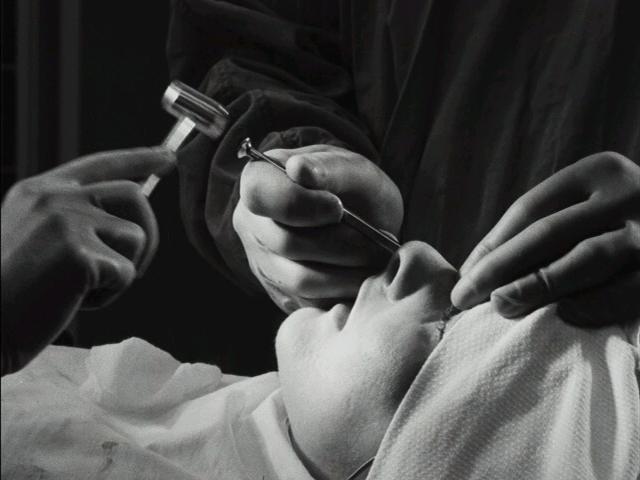|
Genres, Themes, Actors, and Directors:
- Divorce
- Documentary
- Feminism and Women’s Issues
- Gary Merrill Films
- Los Angeles
Review:
Made on weekends over a year’s time by a collective team of directors — Ben Maddow, Sidney Meyers, and Joseph Strick — this pseudo-documentary (only five professional actors were used) is both powerful and unique. As we watch the film’s protagonist, Judith McGuire (Baxley), move throughout her day, we gain an unfiltered glimpse at Los Angeles in the late 1950s: Judith gets her hair done on a weekly basis, has a drink at the bar after lunch, plays poker gratefully with strangers, watches a faith healing ceremony, attends a boxing match, and goes to a strip club with her “gentleman friend”.
Although there’s no real-time dialogue in the film, Judith’s back-and-forth commentary with her “angel” (or conscience), played by Gary Merrill, allows us to see behind the façade of her actions, and empathize with her unspoken thoughts and reactions: she refers to her unborn children (she used birth control) as “killed”; she longs for her philandering ex-husband to want her back; she admits that she’s seeing a married man “for revenge”; she agonizes over time passing painfully slowly. The cumulative effect is one of hypnotic fascination, as we eventually realize that Judith’s status as a divorcee is meant to represent the essential loneliness of all humans, and that she’s not alone in her despair.
Redeeming Qualities and Moments:
- Barbara Baxley in the lead role

- A powerful depiction of post-divorce despair

- Many memorable images of Americans attempting to assuage their loneliness and dissatisfaction

- The surreal transvestite scene near the end of the film

- Leonard Rosenman’s eclectic score
Must See?
Yes. This unusual movie should be seen by all film fanatics at least once. It’s listed as a Cult Movie in the back of Peary’s book, but it probably doesn’t have much of a current following.
Categories
Links:
|
2 thoughts on “Savage Eye, The (1960)”
First viewing. A must – esp. in agreement with the noted statement that “Judith’s status as a divorcee is meant to represent the essential loneliness of all humans…”.
If there were a coffee table book of sadness and need (of love, diversion, the filling up of emptiness), it would be nothing but stills from this movie. Essentially, after all, it is a still-life film; people are generally captured in short clips that seem to reveal their whole lives in nutshells.
Judith’s viewpoint is nihilistic – she considers people “pigs in clothes” and admits that “the touch of human skin makes me sick.” (She transfers that mind-frame as she observes other women: “He hates me in purple, he hates me in red. Maybe he just hates me.”) Judith (expressively lived in by Baxley!) has a world-view eventually shared with female characters in other ’60s-early ’70s films about marriage no longer being the world of ‘Father Knows Best’ and ‘The Donna Reed Show’: films like ‘Diary of a Mad Housewife’, ‘Loving’, ‘The Rain People’, even a ‘comedy’ like ‘Divorce, American Style’. (In that time period of “free love”, it wasn’t just marriage but the whole family structure that was given something of a heave-ho; I still vividly recall how the PBS doc series, ‘An American Family’ threw everything ‘sacred’ about families into the nearest blender.)
A fascinating film, it does occasionally steer a little close to becoming pretentious (i.e., sometimes a bit much in the writing). As well, I think the faith healing scene goes on much too long (we get it) – and, even as a gay man, I can’t say I’m sure what the whole transvestite sequence is supposed to mean – and hesitate to hazard a guess at the mo’.
I agree that the script is occasionally pretentious. In an original draft of my review, I noted something to the effect that it takes a while to get used to the tone of the voiceover — but somehow, on the whole, I think it works.
I also agree that the faith healing scene goes on for too long, but was struck by how different it was from similar sequences in, for instance, the documentary “Marjoe”, or fictional films like “Angel Baby”. The “healers” don’t come across as frauds, and don’t pretend to heal anything right away — they just offer healing PRAYERS, and comfort.
In terms of the final transvestite sequence, my take was simply that it represented pure freedom and gaiety.